Large fleets have generally been most able to afford the cost of vehicle tracking and turn it into an overall cost advantage.
Medium and small sized, fleets, however, could not always make that choice and have it be economical. The high cost of equipment, infrastructure, and monthly fees makes traditional vehicle tracking a difficult proposition for all but the largest of fleets.
Before you can determine if vehicle tracking is worth the cost for your own fleet operations, let’s first touch on the basic benefits that can be realized with a good system.
Less driver downtime – Knowing the location of every vehicle and driver means that emergent work and needs can be routed to available personnel quickly and more easily. This prevents drivers from spending extended periods of time waiting for dispatch or direction.
Better customer service – You are better able to serve your customers promptly and efficiently when vehicle locations can be determined quickly and easily. Thus when a new customer call or request comes in the appropriate vehicle can be dispatched right away.
Field replenishment – When vehicles in the field run low on supplies or other necessary items, a good tracking system allows delivery and restocking out in the field instead of requiring the vehicle to return to base for more materials.
Effective supervision – Fleet managers and supervisors will almost always say that they can do their jobs most effectively when they are out in the field with their drivers, rather than in the office or at a desk. Good vehicle tracking allows managers and supervisors to spend more time out in the field where they are most needed.
The typical costs associated with a traditional vehicle tracking system include the vehicle units, installation,
monthly subscription fees and other hidden fees.
The newest innovation in vehicle tracking, however, is much less expensive and brings this potentially beneficial technology within reach of even the smallest of fleets.
This technology uses smartphones or portable gps tracking devices which don’t require installation and can be monitored using a web-based interface or smartphone application allowing fleet operators to monitor and track their vehicles simply and efficiently without a large upfront outlay.
Anybody considering a vehicle tracking system would be well advised to research both traditional and new options, and do a direct comparison of costs, features and benefits. In most cases, it is likely that the newer technology will end up being the most cost effective solution.
Find out more about AutoAlert GPS Vehicle Tracking.
2G | 2.5G | 3G | 802.11 | ADC | ADSL | A-GPS | API | ASP | AVL | Bluetooth | CANBus | CDMA | D-GPS | DECT | EDGE | EDI | E-OTD | ERP | ETSI | FMS-Standard | GIS | GPS | GPRS | GSM | HTML | IP | IrDA | ISDN | ISP | JAVA | LAN | LBS | MOBITEX | OBDC | PDA | PMR | PVN | RDS-TMC | RF | RFID | RMS | SIM | SMS | TETRA | TDMA | TMC | UMTS | WAN | Wi-Fi | WLAN | WMS | VoIP | VPN | XML | WAP | WVPN | WWAN
Second generation mobile telephone network, also known as GSM
Also known as GPRS. Mobile communication system for transfering data. Most likely used by Telematics applications such as AutoAlerts real time vehicle tracking system. Faster than 2G but lower priority traffic for the mobile networks and patchy coverage.
Third generation European mobile telephone communication standard. Also known as UMTS.
Data transfer standard for wireless local area networks. 802.11a works at up to 2Mbps, 802.11b works at up to 11Mbps whilst the latest 802.11g standard works at upto 54Mbps.
Automatic data capture.
Asymmetric Digital Subscriber line is a way to transmit data over standard telephone lines at speeds approaching cable.
Assisted GPS.
Application programming interface is often offered by companies to allow third party developers to create programmers which link into other systems.
Application Service Provider.
Automatic Vehicle Location is provided by companies such as AutoAlert to help people monitor, protect and better manage their vehicles.
A short-range wireless radio technology that aenables wireless devices such as mobile telephones and accessories to connect to each other.
A wiring network within most new vehicles which connects all the electronic devices within the vehicle.
A digital communications technology (code division multiple access) for mobile telephones.
Differential GPS which is augmented by ground based signals.
Digital Enhanced Cordlesss Telecommunications is a way of transmitting voice traffic for domestic phones and some business phones.
EDGE is an enhanced way of transmitting data over GSM networks at up to 384Knpt.
Electronic Data Interchange.
Enhanced observed time difference is a way of synchronising signals for GSM positioning.
Enterprise Resource Planning System.
The European Telecommunications Standards Institute is responsible for agreeing standards.
FMS-Standard is a system drawn up by Truck manufacturers to provide standards governing data formats for capturing and exchanging information on vehicle systems and particularly for passing it over on-board CANbus networks.
Geographic Information Systems.
The Global Positioning System is a network of 24 satellites based on the US governments network. By using the signals transmitted by these satellites, the position on the earth can be calculated by systems such as AutoAlert.
General Packet Radio Service or 2.5G allows for faster data transmission over the GSM network. Data transfer speeds range from 56Kbps to 115Kbps. AutoAlert uses GPRS to transmit real time information about vehicle movements.
Global System for Mobile Communications is the technology behind the 2.0G network. GSM can be implemented in 900MHz, 1800MHz or 1900MHz.
Hypertext Mark Up Language is used for programming web pages.
Ingress protection is a rating system developed by the International Electrotechnical Commission to describe the ability of electronic products to withstand gas, dust, water and overall dirt penetration. The higher the number the better the protection.
IP also standards for Internet Protocol.
Infrared Data Association is a protocol for sending infra red data between two devices.
Integrated Subscriber Digital Network allows data transfer rates of 2x64Kbps It has now been widely superseded by ADSL.
Internet Service Provider.
JAVA is an object orientated programming language developed by Sun Microsystems. It is ideal for network applications and applets as it is operating system independent.
Local Area Network.
Location Based Services include such services as AutoAlert’s vehicle tracking systems, Multimap’s mapping systems and location based advertising.
Mobitex is an open wireless networking standard used especially for data transmission. It can operate at 80MHz, 400, 800 and 900 MHz (usually 400MHz in Europe). There are over 30 networks operating in over 22 countries with Transcomm being the UK system. The copyright is held by Ericsson.
Open Database Compliance is a way for programs to connect to Databases.
Personal Digital Assistant are basically a scaled down computer which allows for computing on the move. PDA’s with internet access allows fleet managers to see the location of their vehicles whilst out in the field themselves.
Private Mobile Radio is a licence free short range radio technology operating between 446.0-446.1 MHz.
Private Virtual Networks are used by Businesses to create a secure private network over the public internet.
Radio Data System – Traffic Message Channel is used to convey real time traffic information and radio station information to FM radios.
Radio Frequency.
Radio Frequency Identification is a very cheap and short range communication system which allows such things as the tracking of palettes and the identification of drivers using a small card.
Remote access server.
A Sim is the small chip which goes inside most mobile phones and tracking units and contains information about the subscriber. SIM stands for Subscriber Identification Module.
The Short Message Service is a system used to transmit short text messages up to 160 characters long on GSM networks. It was originally used by mobile phone technicians using spare capacity but has grown in popularity wtih billions of messages sent per week. AutoAlert uses SMS to send proactive alerts to customers and to send messages to and from units as a back up to GPRS.
Terrestrial Trunked Radio is a land based mobile radio communication standard.
Time Division Multiple Access is a way to send digital data over systems such as GSM at high frequency.
Traffic Message Channel.
The Universal Mobile Telecommunications System is the European third generation cellular mobile standard also known as 3G. UMTS is the overall system whilst W-CDMA is the technology behind it.
Wide Area Network.
Wi-Fi stands for Wireless Fidelity and is a brand name adopted by the Wi-Fi Alliance which currently has over 200 members. The Wi-Fi alliance promotes 802.11 local area network specification and asserts compliance with it.
Wireless local area network.
Warehouse management system.
Voice Over Internet Protocol is a way to transmit voice data over the internet.
A virtual private network is often used by companies to set up a private network over a public system such as the Internet.
Extensible Mark Up Language is a flexible programming language which is used by companies such as AutoAlert to exchange data with other systems such as Google.
Wireless Application Protocol first allowed the internet to be viewed on mobile telephones. AutoAlert uses WAP to provide vehicle location information to basic mobile telephone.
Wireless Virtual Private Network. As VPN, just wireless.
A digital communications technology (code division multiple access) for mobile telephones.
Wider Wireless Area Network.
Thanks to the Telematics and Mobile Data Guide 2008 for some of the information on which this guide is based.
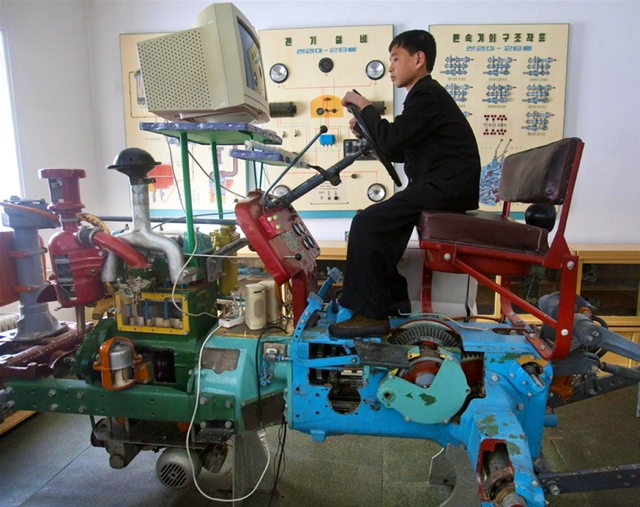 It’s not often that the forces of IT and agriculture are united, but in its quest for agrarian supremacy, North Korea has devised a novel (if slightly odd) method to help educate its children in the ways of farming. Using an ’80s style monitor along with the gutted chassis of a Soviet-era tractor, it has created a unique computerised simulator in an attempt to help school children learn the ways of their forefathers. Admitedly, it lacks the form factor of the latest GPS devices, but it does have a certain retro charm.
It’s not often that the forces of IT and agriculture are united, but in its quest for agrarian supremacy, North Korea has devised a novel (if slightly odd) method to help educate its children in the ways of farming. Using an ’80s style monitor along with the gutted chassis of a Soviet-era tractor, it has created a unique computerised simulator in an attempt to help school children learn the ways of their forefathers. Admitedly, it lacks the form factor of the latest GPS devices, but it does have a certain retro charm.
Despite its somewhat Heath Robinson appearance, the contraption apparently makes a dramatic difference in a school curriculum which has a strong practical emphasis on trade skills and vocational work. Pupils learn how to plough virtual fields whilst their counterparts in Europe learn how to mow down innocent pedestrians via the likes of the popular video game, Grand Theft Auto. Okay, perhaps that’s a slightly implausible comparison, but it is somewhat indicative of a disparity between our respective cultures.
Moreover, it begs the question of why we aren’t more proactive in our use of technology in the quest for safer roads. The driving test has incorporated a hazard perception assessment for a good many years, but the process hardly replicates experiences on the road.
Watching a selection of video clips and clicking a mouse button when you see a dangerous (or blindingly obvious) situation is hardly representative of modern driving conditions. For today’s youth, it may be slightly more realistic if it was done under the influence of a Greggs’ stake bake, whilst thumbing through a Sat Nav menu and composing a text message. With such a multi-sensory world of gadgets and computer tech, it’s little wonder that as many as twenty percent of young drivers have had an accident. In fact, a recent study found that some 13.2% of 17 year old drivers and 12.85% of 18 year old drivers have been involved in collisions. This is considerably higher than the average 6.5% across all other age groups for a similar one-year period. So, what’s to be done?
Well, I’d humbly suggest that the use of sophisticated simulator technology could make a considerable difference to the safety record of the nation’s youth. Although we often hear stories of irresponsible driving at silly speeds, such situations are, thankfully, the exception.
According to Direct Line, the primary cause of accidents amongst young drivers is lack of experience. This leads to either a dangerous overconfidence, or a panic situation, where a lack of familiarity with the road ensures bad situations get worse very quickly. The solution, it would seem, is to allow young drivers to clock up more hours practice without putting them in harm’s way. Commercial airline pilots need to log in more than 250 hours’ on the flight deck before they get their license and even then, they’ll be accompanied by a senior first offer or captain until they get to the point they can command their own airliner.
Of course, airplanes are slightly more advanced than the humble motorcar, which certainly doesn’t cost anywhere near the amount of your average 747 (unless you’ve just filled your tank, in which case it comes close). Finding an effective and inexpensive system that accurately recreates some of the scenarios today’s young drivers are likely to face surely isn’t beyond the scope of man. So perhaps it’s time we invested in rolling out a series of driving simulators that will let young drivers rack up a few more miles without the exorbitant costs of driving lessons…or filling up at the forecourt.
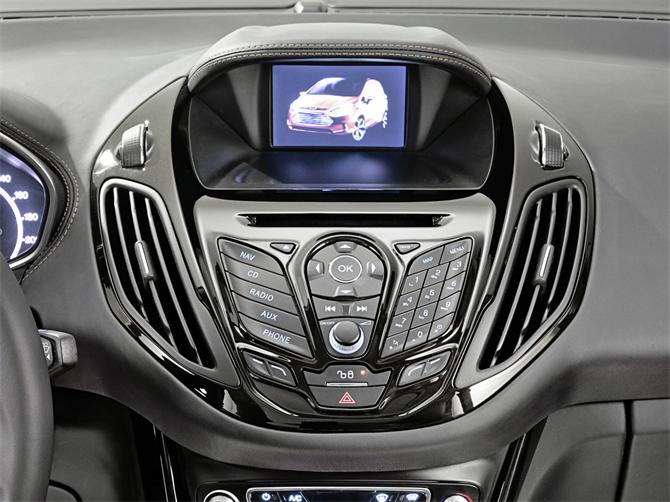 If the boss of Ford has predicted correctly, within a decade motorists might be driving like a pilot flies an aeroplane: by switching to a GPS powered autopilot. Bill Ford Jnr is the great grandson of Henry Ford, the guy who transformed the car from a rich man’s toy to everyday transport within reach of millions. He has announced his vision for the future after declaring that dramatic advances in technology will be needed to cope with the global rise in cars from 1 billion now to 4 billion by 2050.
If the boss of Ford has predicted correctly, within a decade motorists might be driving like a pilot flies an aeroplane: by switching to a GPS powered autopilot. Bill Ford Jnr is the great grandson of Henry Ford, the guy who transformed the car from a rich man’s toy to everyday transport within reach of millions. He has announced his vision for the future after declaring that dramatic advances in technology will be needed to cope with the global rise in cars from 1 billion now to 4 billion by 2050.
Apparently some of these advances are already in the pipeline, fuelled by this prediction. I daresay, if this autopilot facility catches on, we would then dispense with hands free mobiles as we’ll have our hands free anyway.
Mr Ford was addressing the 2012 Mobile World Congress in sunny Barcelona. “Cars are becoming mobile communications platforms,” he said. “Right now there are a billion computing devices in the form of individual vehicles out on our roads. They’re largely unconnected from one another and the network. We’ll increasingly take advantage of the car as a rolling collection of sensors to reduce congestion and help prevent accidents.
“I’m confident that we will see many of these advances on the road in this mid-term period (between 2017 and 2025) because the early versions are already being designed and, in most cases, tested.”
I guess it’s fuel for thought and sceptics will automatically dismiss the idea as they did Satnavs and GPS devices.
The birth of this new generation has already happened. Ford’s B-Max is being launched at the Geneva motor show and goes on sale in September in the UK. This family car is the first in Europe to be fitted with new SYNC mobile technology which automatically alerts the emergency services in an accident. Drivers can also use voice commands to control the in-car entertainment system.
It’s unclear just how many will steer clear of this new technology.
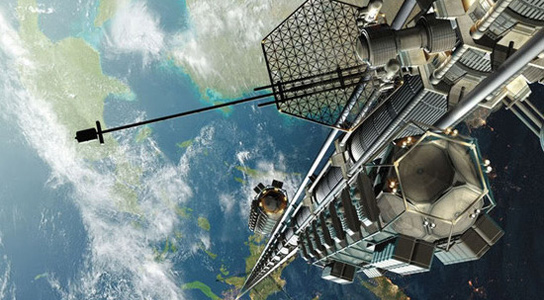
A recent report suggests that Japanese engineers, led by Dr. Oyayashi, are working on high rise plans to build a lift into outer space. Now that really is a global positioning system…and certainly a smidgen more advanced than a TomTom.
I’m not sure this is such a good idea. The assumption is that around 30 passengers at a time can travel in the lift for a cool 22,000 mile journey at an elegant speed of 120mph and this will take a week to complete.
Now, a week may be a long time in politics but it’s going to be one awfully long week in a lift. Being stuck in a car for a few hours, even with GPS, is bad enough. And I don’t suppose there’ll be many stops en route to let people out and welcome new ones in.
The idea is that once they arrive ‘at the top’ they will step out into some kind of space station. They can then admire the spectacular post card views just like any discerning tourist. So in other words, an aerial view of earth and its surroundings – as far as the eye can see, I guess.
Dr. Oyayashi hasn’t made it clear what else these space tourists will do after staring into space to admire the view. Will there be post cards on sale? If so, will you be able to send them back down to earth on a lift ahead of your returning lift? Given that there won’t be much for you to do in space on a space station, I imagine within 10 minutes, you’ll be bored by the view; you will then be stepping back onto the lift for the week long downward descent back to Earth. Doors opening, mind the gap.
The other slight niggle I have is that the atmosphere in most lift journeys can be decidedly awkward. Conversation grinds to a halt and woe betide anyone who attempts to chat to their neighbour. Most people stand rigidly tense, desperately trying to avoid glances. Sometimes, admittedly, it’s difficult to stop yourself from goo-gooing at the baby in the pram who’s staring straight at you as if you are a monster from outer space. So you try to watch in dignified silence as the numbers go up or down and you reach your level. How will you do that with Ground floor….22,000 miles…top floor? There’s going to be a long, claustrophobic bit in between…and probably not many babies.
And supposing the lift gets stuck somewhere midway? Will there be stairs in place beside the lift shaft and how good will the access be? How long is it going to take the repair man to arrive? Oh, and what will people do for refreshments, laundry and washing facilities on the way up, or down?
To allow for the possibility of getting lost in space, will it be equipped with a SatNav or GPS device? I, for one, won’t be offering to be called out to fit one. I’d rather admire the unspectacular view of London skyscrapers from the office window.
Who on earth will be racing to get tickets for this lift to nowhere?
There’s nothing like modern-day convenience, such as GPS, when it comes to motoring. And there’s nothing like the Isle of Man, to be the original brainstorm behind some little big thinking. Hooray for the Manx (though you might need a Sat Nav to find them). What with Fairies under the bridge that every passing motorist absolutely has to say ‘hello’ to, or risk bad luck, they certainly know a thing or two about manufacturing. Where else can you go to see the largest working waterwheel in the world or watch one of the few remaining skilled Manx hand-loom weavers?
Now let’s talk Peel. This is the place on the westerly tip of the Isle of Man where sunsets are just plain glorious as the sun sinks below Ireland, just a hop across the sea.
Well, the Peel Car could be the big thing. This car is the born again version of a quintessentially British classic that was made on the Isle of Man between 1962-1965. It has more pulling power than a Ferrari but as only 50 were produced, it never got far beyond the grid. This little cutie is just big enough to take all the fairies in one bridge hop; it could also take you straight from the road right up to your desk, via the office canteen of course, for a quick coffee stop on the way.
It is being re-manufactured as the P50 Peel Car by two enthusiastic entrepreneurs who recently won backing by Dragon’s Den investor, James Caan. Yes, this could see the boss installing no parking signs by the lift. You cruise in through the door, fresh from the road, a straight line to the lifts, out onto the carpet tiles; by passing the water cooler, off you go, steady along the corridor. Oops, watch the girl from accounts doing a spot of photo-copying, best give her a quick blow on the horn. Toot, toot.
It’s the world’s smallest production car and you can do a quick 3 point manoeuvre and park it right beside your desk. Drive out into the traffic after work and you’re sure to be in the centre lane of attention. However, whilst you can drive from London to Bristol on just 1 gallon of petrol, you won’t be allowed on the motorway.
A limited edition is being planned before the go ahead is given to produce a practical everyday motor micro car which would be hand-built in Britain; what a snip at just £15k each or more than £100,000k for an original in mint condition.
Get out the SatNav, P50 Peel Car drivers, and if it doesn’t drive you round the bend, make sure it doesn’t drive you into a large puddle. Come to think about it, the boss might need a good tracking device too, to send him alerts of exactly where you are located, if you get lost…in the office.
Find out more about AutoAlert GPS Tracking, and how it could benefit your business.
I know I’ve been banging on a fair bit about the electric car hoo, haa but this latest really bites the bullet. The cops have taken charge of a ‘PC plug’ electric panda car with no carbon emissions. Not much hope then of chasing road ragers. In fact, the criminal underworld must be feeling quite happy go lucky, an easy getaway is looking likely.
Though clearly enamoured of electric gadgets (like flashing blue lights and GPS), this is turning a bit fuzzy. I mean supposing the panda patrol car jumps the lights, zooms off, ready for a straightforward handcuff job and ah, what bad luck, the thing begins stuttering to a bit of a stop. Mmm, seems like the charge has run low, oops. Not exactly the stuff of crime novels, more like a Carry on Charging movie – or not, as the case may be.
Still, the Scots – and they’re a canny lot – have really taken this one on board and have their foot on the pedal. The force north of the border are taking things seriously and it’s one way driving down this road of eco friendly power, could be a long and winding one though. In fact, the Scots have unveiled an ‘electric panda’ that will become Scotland’s first fully-operational battery powered police car.
As part of their strategy to reduce carbon emissions, Lothian and Borders Police have replaced a standard police patrol car with Scotland’s first fully-operational battery powered police car. This signals a great eco friendly manouvre and might offer a smooth and comfortable ride but most of us would probably feel a lot safer knowing it can outperform on the high speed chase.
And that’s not all: plans are underway to add more of the carbon neutral vehicles to more fleets in the near future. I hope they’ve got GPS systems installed on these, imagine the furore if they went missing.
Anyway, should we south of the border people go full throttle and pursue them? Let’s face it, we’ve tried that in the course of history and it hasn’t worked.
Dave Kennan, fleet manager for Lothian and Borders Police, described the new car as ‘a step in the right direction’. Let’s hope he’s right and the crime busters carry on charging.
Find out more about all the features that AutoAlert offers to help you reduce your costs.
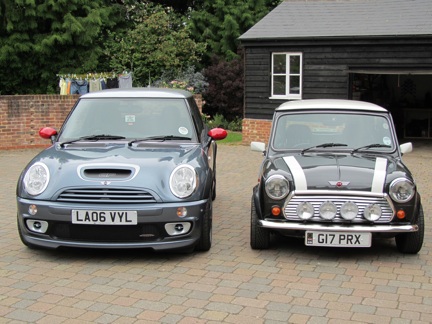 As the latest discrimination debate hots up on obese people and airline seating, it seems that the automobile industry have jumped in and tipped the scales the other way.
As the latest discrimination debate hots up on obese people and airline seating, it seems that the automobile industry have jumped in and tipped the scales the other way.
Interestingly, over the last 60 years, typical family saloons have grown in width by more than a foot. Now, this could well be a response to the end of post war rationing in the 50’s. After all, with food in plentiful supply after all those years of austerity, I guess most people felt utter joy in being able to eat well, without such restriction. Now there could be a more modern dilemma: as every GPS unit can quickly point us in the direction of the nearest restaurant, there are fewer reasons not to stop for a mid-journey snack.
The problem of car seat width is still a growing problem. The demand for bigger and more spacious vehicles is booming yet we can hardly start widening roads and car parking spaces.
Well, innovative designers are busy stretching their imaginations. As obesity has reached record levels and shows no sign of slowing down, how are all these fat people going to fit behind the wheel? A good question. Should we tell them all to eat less, preserve their health and if they want to drive a car, slim down? Some might find this a little patronising. Imagine being stopped by the police, ‘Excuse me madam or mister, you look a little too fat to be driving that car.’ You’re told to have a weigh in at the side of the road. A tape measure is whisked out faster than a breathalyser, wound unceremoniously around chunky thighs and large bottoms and after much tut, tutting, you’re given a caution. No, Wait! A penalty and your licence whisked away until you’ve slimmed down.
As almost half of British men, and four in ten women, could be obese by 2030, according to The Lancet, car manufacturers are naturally keen to keep their larger customers in the style size to which they have become used to. Ok, but how will slim people fit into a wider seat, it could feel a bit spacious.
So, the challenge for the designers in producing the next generation of cars, is to find new ways to accommodate increasing girth into the vehicles, without impacting on car width and safety. A big problem. I mean, according to BMW, this stretches more than just the imagination. The company recently conducted a study to see how obesity affects mobility while driving; well, the results affect just about everything from the size and spacing of the pedals to the width of the door opening and strengthening grab handles above the doors.
As Ralf Kaiser, a member of BMW’s ergonomics team, told The Sunday Times: ‘People are getting more obese and we want to find out how that limits their range of motion and how our vehicles can adapt to the changing needs of our customers.’ Even parking control is impacted if fat people find it difficult to turn 140 degrees to look behind them. Is this yet another area in which technology will need to step in to provide a solution? Will automatic parking sensors, along with ultra accurate global positioning system technology will mean that manual parking will soon be a thing of the past?
It’s quite a plump question, to widen car seating or not? It’s clearly an issue needing scientific thought…because if statistics are right, this could affect 95% of the driving population, both for the slim, and the not so slim.
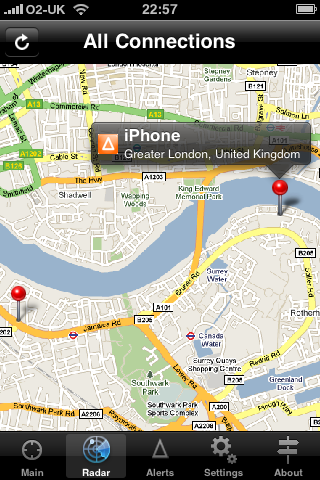
With AutoAlert you don’t need to worry. Simply open your AutoAlert iPhone Groups application, send your location then access the Radar screen to see where you are in relation to your vehicle. Leave the application tracking and you can watch yourself home in on your cars position.
If you haven’t got an AutoAlert GPS Tracking Unit in your vehicle, you can still use the AutoAlert iPhone Tracking app to leave your location when you get out of your car then see your current position relative to that location when you are trying to find your car later on.
And if you don’t have an iPhone, you can use any colour mobile telephone to check the last known position of your vehicle by pointing your phone at /mobile/ then logging in with your account details.
For any other help and advice using any AutoAlert product, check out our AutoAlert Support pages



AutoAlert Tracker Application V2 is now live in the iTunes store.
Please note: This application has now been superseded by our AutoAlert Monitor application for iPhone and iPad.
Upgrade the application for free and get a host of new features including:
The application is also quicker and with improved look and feel to aide your tracking experience
Find out more about AutoAlert Monitor for iPhone and iPad